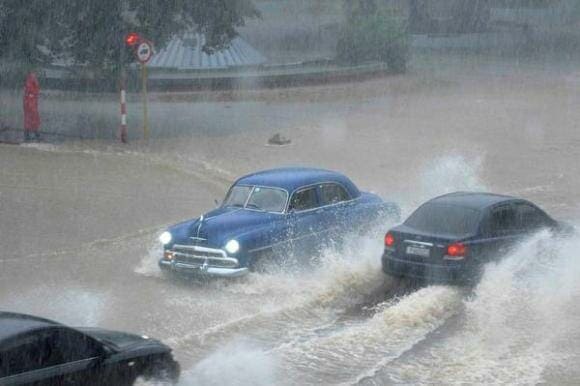The intense rains of the last few days in Cuba have caused the effects of the drought to be practically eliminated.
Last week, especially, the Island suffered from climatic instability that led to torrential rains in almost all the provinces. However, the eastern portion of the country was the most affected, in turn, it was the worst situation regarding the drought.
Since the beginning of the current month, the intense rains have allowed Cuban reservoirs to be above 60% of their filling capacity. The “June downpours” arrived just in time to prevent the drought from taking critical turns, especially in the eastern end of the archipelago.
The director of Hydrology and Hydrogeology of the National Institute of Hydraulic Resources (INRH), Argelio Fernández Richelme commented on the delicate subject. “In the country, 146.2 millimeters (mm) of rainfall have accumulated, which means 75% of the historical average for June.”
“In the eastern region, the rains have been more copious, leaving a record of 211.3 mm, for 141% of the historical average for this month. From the point of view of the management of water resources and their different uses, the expert described this meteorological event as quite beneficial”.
“It has rained in many places where there was a need for it to rain, since it has allowed the increase of water accumulated in the reservoirs.” This is vital for the supply to the population and economic activities”.
West and center did not benefit as much
In the western half of Cuba, the rains were not as intense as in the eastern portion of the island. The records marked 53.9 mm, 23% of the historical average. Meanwhile, in the eastern region accumulated 289.7 mm were archived in Camagüey; 281.2 mm in Granma; 226.1 mm in Santiago de Cuba; 214.9 mm in Las Tunas; and 204.3 mm in Holguín.
The specialist confirmed that in less than 15 days, the country’s reservoirs have increased their volume of accumulated water by more than 1.6 billion cubic meters. The territories with the highest fills above their capacity are: Granma (94.2%); Santiago de Cuba (86.6%); Holguin (84.8%); Cienfuegos (78.4%); and Camagüey (73.9%).

